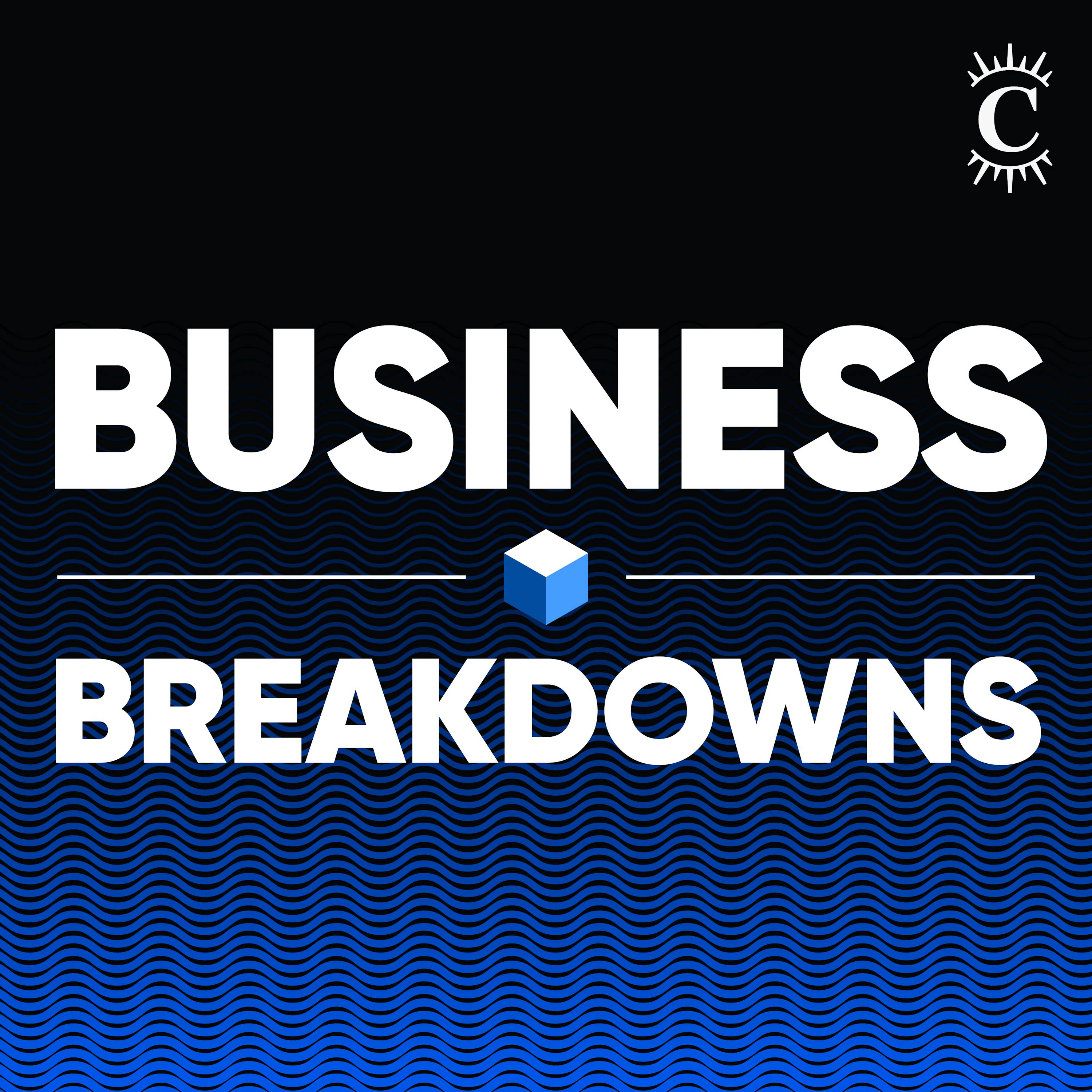![cover of episode Kering: It’s Gucci - [Business Breakdowns, EP.199]](https://megaphone.imgix.net/podcasts/24661654-c586-11ef-8a3e-dbac613142fc/image/b02359cb7f4e4581a883e16e4a5baa88.jpg?ixlib=rails-4.3.1&max-w=3000&max-h=3000&fit=crop&auto=format,compress)
Kering: It’s Gucci - [Business Breakdowns, EP.199]

Business Breakdowns
Deep Dive
Why has Kering's stock performance lagged behind LVMH over the past five years?
Kering's stock is down over 60% in the last five years, while LVMH is up over 40%. This underperformance is largely due to Kering's reliance on Gucci, which represents nearly 50% of its revenues and over 50% of its profits. Gucci's cyclical nature, driven by its fashion-forward products, has made it more vulnerable to market fluctuations compared to LVMH's more stable leather goods.
What is the significance of Gucci within Kering's portfolio?
Gucci is Kering's core brand, contributing almost 50% of revenues and over 50% of profits. Its success is highly dependent on fashion trends, making it more cyclical than other luxury brands. Gucci's margins have historically ranged from 30% to 40%, but recent challenges have seen its operating margins drop to just over 20%.
How does Kering's approach to brand acquisition differ from LVMH's?
Kering focuses on scaling up smaller luxury brands by transitioning them from wholesale to retail, leveraging its multi-brand expertise. In contrast, LVMH has diversified into areas like Sephora, luggage, and even hotels, giving it a broader portfolio beyond traditional luxury goods.
What are the key cost drivers in Kering's business model?
The primary cost drivers for Kering include product manufacturing (30% of costs), store networks, and advertising. Advertising is crucial for maintaining brand visibility, especially in luxury markets where consumer perception is key. Operating leverage is achieved through fixed costs like real estate, while advertising and creativity expenses can vary.
How does Kering manage its brand portfolio geographically?
Kering's brands have varying geographical strengths. For example, Bottega Veneta is stronger in Europe and Asia, while Gucci has a significant presence in the US. The company strategically locates stores near competitors like LVMH to negotiate better rents and maximize visibility.
What impact did Balenciaga's controversial ad campaign have on Kering?
Balenciaga's ad campaign fallout significantly hurt its sales, particularly in the US, where consumers have long memories of such missteps. However, Kering's multi-brand strategy mitigates the overall impact, as the damage is largely confined to Balenciaga rather than the entire portfolio.
What is Kering's strategy for future growth through acquisitions?
Kering is unlikely to make major acquisitions in the near term due to a stretched balance sheet (3x EBITDA). However, it holds a 30% stake in Valentino with an option to buy the remaining shares, which could be a future growth driver. The company may also divest some real estate to strengthen its financial position.
How does Kering's valuation compare to its historical performance?
Kering is currently trading at 18 times forward earnings, a significant discount to its historical valuations. If Gucci's margins return to their historical 30%-40% range, the price-to-earnings multiple could drop below 10, making it an attractive investment. The enterprise value to sales ratio is also at a 50%-60% discount compared to historical levels.
What are the key risks associated with investing in Kering?
The primary risks include operational gearing, where small revenue declines can lead to significant profit drops, as seen with Gucci's recent performance. Additionally, the cyclical nature of luxury goods and the reliance on fashion trends make Kering vulnerable to economic downturns and shifts in consumer preferences.
What lessons can investors learn from Kering's business model?
Investors should understand that change takes time, especially in luxury brands where product cycles and management transitions can span years. Kering's experience with Gucci highlights the importance of patience and the need to allow new strategies, such as designer changes, to fully materialize before assessing their success.
Shownotes Transcript
Today, we are breaking down the global luxury group Kering. You know Kering from its brands Gucci, YSL, Bottega Veneta, Balenciaga, and the list goes on. It's a luxury house similar to LVMH, but LVMH over the past five years is up over 40% and Kering is down over 60%.
To break down Kering, I am joined by Jonathan Eng), portfolio manager at Causeway. We cover the owners and operators of Kering, the Pinault family. We also discuss wholesale distribution versus retail distribution and brand margin profiles. But Kering's core brand, Gucci, is different from much of what you see in luxury, and we spent a significant amount of time diving into it. What makes Gucci more cyclical than understated luxury? Where do we stand with Gucci today? And how does Jon think about all of this as an investor tapping into his historical context in the space? Please enjoy this breakdown of Kering.
For the full show notes, transcript, and links to the best content to learn more, check out the episode page here.)
-----
Business Breakdowns is a property of Colossus, LLC. For more episodes of Business Breakdowns, visit joincolossus.com/episodes).
Editing and post-production work for this episode was provided by The Podcast Consultant (https://thepodcastconsultant.com)).
Show Notes
(00:00:00) Welcome to Business Breakdowns
(00:00:53) Overview of Kering and Its Brands
(00:02:13) Kering's Business Strategy and Challenges
(00:05:02) Historical Context and Family Influence
(00:07:09) Comparing Kering and LVMH
(00:10:27) Financial Performance and Market Dynamics
(00:18:05) Impact of Creative Directors and Brand Evolution
(00:21:28) Modern Analytical Approaches in Luxury Market
(00:23:29) Exploring Kering's Development Centers
(00:24:36) Decentralized Decision-Making in Luxury Brands
(00:25:04) Wholesale vs. Retail: Control and Margins
(00:27:33) Strategic Store Locations and Investments
(00:28:51) Geographical Brand Preferences
(00:30:19) Balenciaga's Advertising Fallout
(00:33:46) M&A Landscape and Future Growth
(00:37:41) Valuation and Market Position
(00:43:06) Operational Gearing and Risks
(00:43:58) Key Lessons from Studying Kering